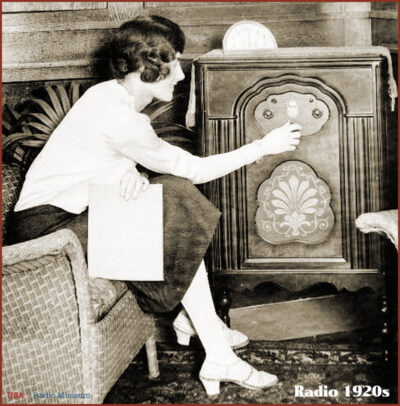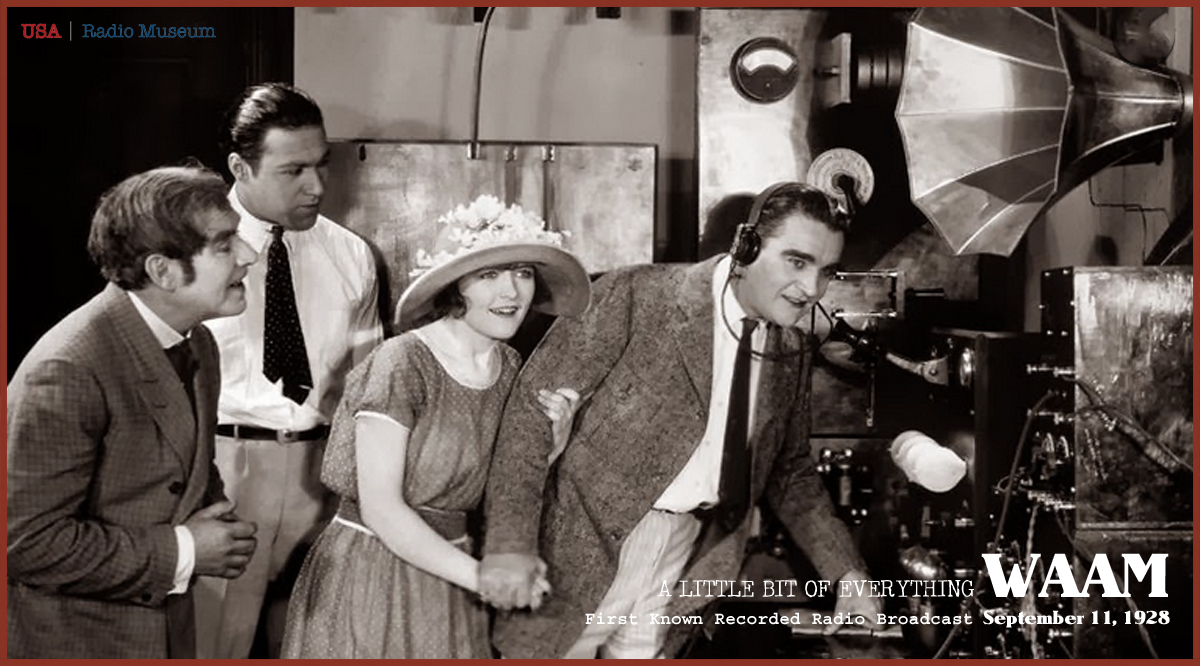WAAM’s Legacy and the Birth of Recorded Radio Exploring One of the Earliest Known Surviving Radio Broadcasts Few artifacts allow us to hear
WAAM’s Legacy and the Birth of Recorded Radio
Exploring One of the Earliest Known Surviving Radio Broadcasts
Few artifacts allow us to hear history unfold, but nestled in the archives of early radio, WAAM’s A Little Bit of Everything—recorded on September 11, 1928—stands as one of the earliest surviving radio broadcasts. Captured at the Thomas Edison Studios in West Orange, New Jersey, this program offers a rare glimpse into the pioneering days of radio, a time when broadcasters were still experimenting with live versus recorded formats.
At the time of this recording, radio was barely eight years old as a commercial medium, yet its influence was already reshaping American culture. Stations like WAAM in Newark, New Jersey, were leading the charge in radio’s technological evolution, laying the groundwork for an industry that would define the 20th century.
 Radio’s Early Growth: Setting the Stage for WAAM
Radio’s Early Growth: Setting the Stage for WAAM
By 1928, radio had transformed from a scientific curiosity into a national phenomenon. It all began with KDKA in Pittsburgh, which became the first licensed commercial radio station in 1920, airing the results of the U.S. presidential election. This moment ushered in the age of broadcast radio, and within just a decade, it had become a dominant force in American life.
During the Roaring Twenties, radio technology made major strides:
- Vacuum tube transmitters improved signal strength and clarity.
- Superheterodyne receivers enhanced radio reception and became the standard in consumer radios.
- Networks like NBC and CBS formed, linking stations across the country for syndicated programming.
- The introduction of sponsored content transformed radio into a viable commercial industry.
By the late 1920s, radio was no longer just a novelty—it had become a mass medium, connecting audiences across vast distances and shaping everything from news consumption to entertainment trends.
And then came WAAM’s groundbreaking broadcast—a recorded program that would survive nearly a century, allowing us to experience early radio just as listeners did in 1928.
WAAM’s Influence and Its Evolution Into WNEW
WAAM was part of radio’s experimental era, when stations tested new formats, advertising models, and the possibilities of recording broadcasts for later playback. While most radio programming at the time was live and fleeting, WAAM’s recording of A Little Bit of Everything is one of the rare instances where sound from this era was preserved.
WAAM later transformed into WNEW in 1934, marking a new chapter in broadcasting history:
- Personality-driven radio emerged, shifting away from rigid announcers to engaging radio hosts with distinct styles.
- Big-band music became a radio staple, introducing a more entertainment-focused format.
- Integrated advertising changed the way sponsors engaged with listeners, leading to the rise of commercial storytelling.
WNEW became a cultural force, pioneering radio personalities, entertainment formats, and marketing strategies that influenced stations nationwide.
WAAM’s legacy, preserved in this historic 1928 recording, represents radio’s transition from experimental curiosity to mainstream mass media.
WNEW’s Rise in the 1930s
Once WAAM transitioned into WNEW, the station quickly became a trailblazer in radio programming. Unlike its predecessor, which focused on experimental formats, WNEW embraced music-driven content, personality-based radio, and commercial sponsorships—all of which defined radio’s future.
1. The Birth of Personality-Driven Radio
WNEW was one of the first stations to move away from rigid announcers and introduce engaging radio hosts who connected with audiences on a personal level. This shift made radio feel more intimate, turning DJs into trusted voices rather than just broadcasters.
2. Music Programming and the Swing Era
During the 1930s, WNEW became synonymous with big-band music, playing hits from artists like Benny Goodman, Glenn Miller, and Duke Ellington. This format helped establish radio as the primary way people discovered new music, influencing the rise of music-driven stations.
3. The Expansion of 24-Hour Broadcasting
In 1935, WNEW launched Milkman’s Matinee, one of the first overnight radio programs designed for night-shift workers. This innovation made WNEW the first radio station in the world to broadcast 24 hours a day, setting a precedent for round-the-clock programming.
4. Radio’s Role in News and Culture
As the Great Depression gripped the nation, radio became a lifeline for Americans seeking news, entertainment, and escapism. WNEW adapted by incorporating news updates, interviews, and cultural programming, ensuring it remained relevant and engaging.
The Importance of Preserving Radio’s Earliest Voices
WAAM’s A Little Bit of Everything is more than just a relic—it’s a window into the past, capturing the sound, style, and energy of radio’s formative years. Its survival reminds us why preserving early broadcasts is vital:
- It allows modern audiences to experience history exactly as it was heard in its time.
- It highlights the technological innovations that made radio a lasting medium.
- It showcases the cultural evolution of entertainment and advertising in radio’s early decades.
As part of the USA Radio Museum, archives like this recording help us understand where radio has been—and where it’s headed next.
To hear WAAM’s historic broadcast and step back into September 11, 1928, listen below:
WAAM (Newark, NJ)| ‘A Little Bit of Everything’ | September 11, 1928
Audio Digitally Enhanced by USA Radio Museum
Final Thoughts
WAAM’s 1928 broadcast reminds us that radio has always been about connecting people, shaping culture, and pushing technological boundaries. From its earliest days to its continued evolution, radio remains a living history, capturing the voices and moments that define generations.
As we approach September 11, 2025, this remarkable recording will soon turn 97 years old, edging closer to a full century of existence. It is astonishing to think that nearly a hundred years ago, listeners tuned into WAAM’s A Little Bit of Everything, experiencing the magic of early radio in real time.
Imagine the world in 1928—Calvin Coolidge was the nation’s 30th. President (1923-1929), Charles Lindbergh had just completed his historic transatlantic flight, the Roaring Twenties were still in motion, and the very idea of recorded radio was groundbreaking. Yet here we are, in 2025, able to preserve, study, and listen to this moment in broadcast history.
The upcoming anniversary offers an opportunity to celebrate WAAM’s legacy, along with this special audio presentation the USA Radio Museum is featuring today, highlighting its impact on recorded broadcasting and its evolution into WNEW. History lives through sound, and as we honor this milestone, we acknowledge radio’s enduring ability to captivate and inspire.
Through recordings like A Little Bit of Everything, history doesn’t just live on the page—it lives in sound.

